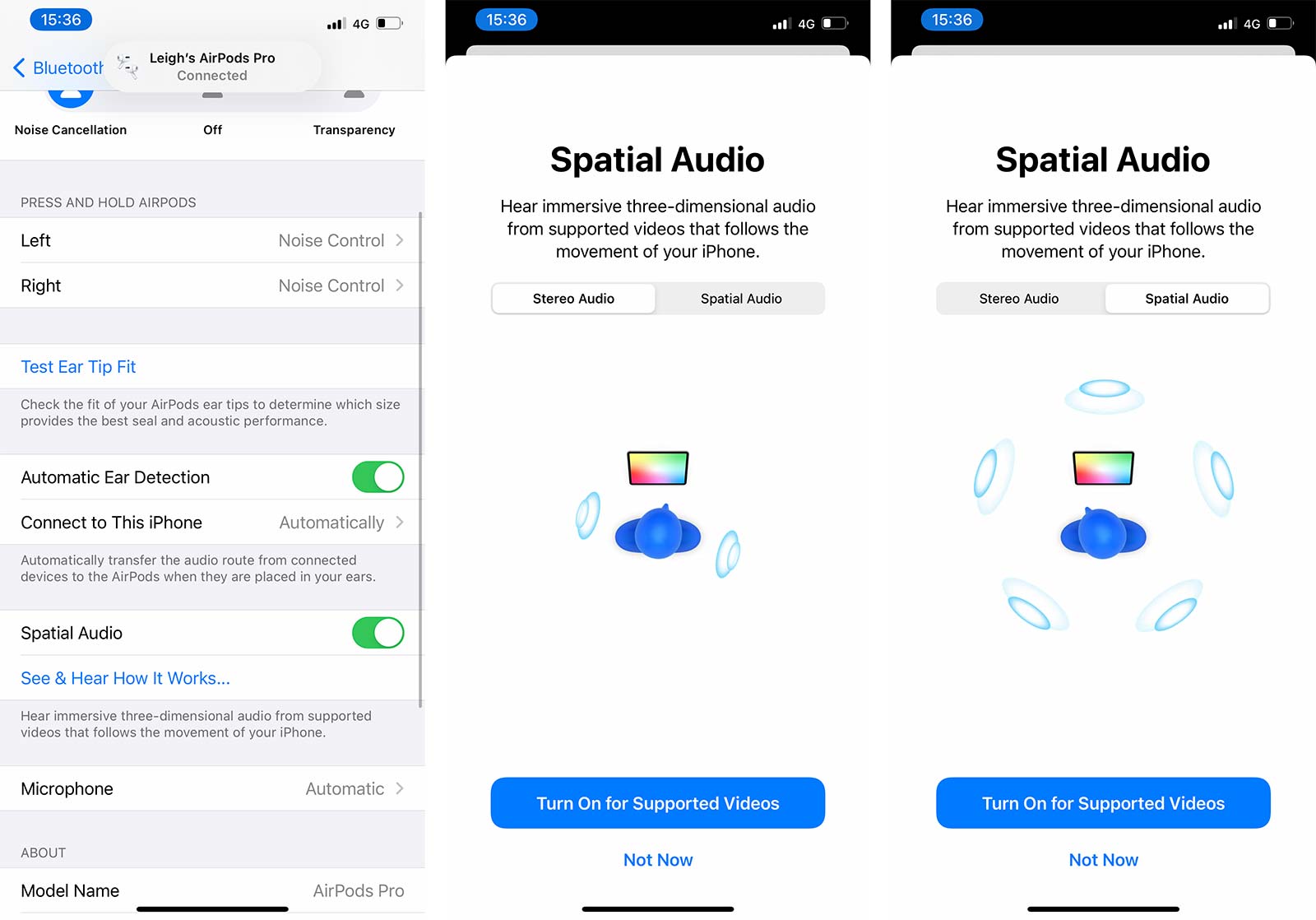Quick review
The good
The not-so-good
If you own a pair of Apple’s AirPods and a recent iPhone or iPad, you get a surprise addition. It just might not do enough.
Wish your earphones played sound with a little more dimensionality? Apple’s latest version of iOS includes a bonus feature for folks with a pair of AirPods Pro, and it’s made just for that.
Called “spatial audio”, it’s built to make audio sound a little more realistic, based on your position in space. Does it work, and is it something you’ll use in your regular day-to-day?
What is spatial audio?
Headphones have never sounded better, but there’s even more they can be doing. Improvements to the technology means we can get richer sound that hits us even more, but what if the sound you listen to could become more dimensional?
In recent years, the idea of 3D audio has helped get there. Sometimes referred to as 4K audio — or the idea of a surround sound made for ultra high-definition content — 3D audio is a little bit different because it is spatial in nature.
It’s something a little bit newer, and takes on the idea of surround sound, but positions audio in more than just the space on either side of your head. Rather, your head becomes the position in the middle of the sound, and as you turn your head, spatial sound occurs around you.
What does spatial audio do?
Long story short, spatial audio is about hearing audio as if it’s played from locations around you. The idea is to encase you in a bubble of sound, and so if you turn your hear to one side, you’ll hear more from that side as the audio mixers have designated.
While this might come across like jargon, what it means is that instead of having two channels of audio — left and right — always playing the sound regardless of where you turn your head, spatial audio plays the channel of sound in positions you face, or even face away from. It’s audio that is positioned in space, and that you hear based on where your ears are aimed.
Essentially, spatial audio is 3D sound, while standard stereo sound is 2D sound. It’s not really, but it can come across that way, because in standard stereo, the music and sound sits at your ears, but in spatial audio, the direction of your head — and the place your ears sit in — can change the type of sound you’re listening to.
Does it do the job?
Apple’s roll-out of spatial audio feels like a beginning, but it’s one with clear limitations. In the beginning, spatial audio only works with the AirPods Pro, limiting it to one specific pair of headphones, and applying it only to Dolby Atmos in movies and TV shows.
That means it will only work in select films and TV programs, and only if you have a pair of Apple’s $399 noise cancelling earphones, limiting the use considerably.
This despite there being Atmos music out in the world, something Dolby provides through at least one music service, Tidal, while some of Bose’s headphones offer 3D capabilities via augmented reality audio. Basically, the technology is there for both the music and the headphones, but Apple’s take on spatial audio is limited to very select purposes right now, and that’s a shame.
For the moment, even Apple’s own use feels a touch limited. If you watch a movie or TV show with a Dolby Atmos soundtrack, you’ll hear some directionality, typically when you move your head. It means the soundtrack isn’t limited to being situated at your ears alone like it is with regular headphones, but we found most of the sound coming from the front, not from all over.
Much like how a soundbar has much of the sound in the front channels — front left, centre, and front right — we found most of the audio sat there at the front in our tests with both “Mythic Quest” and “Spider-man: Homecoming”. We’d turn our head and it would sit there, firmly, but it’s just the beginning.

What does Apple’s spatial audio need?
Because it’s just the beginning, it’s also the beginning of what Apple could and should add, and that includes music support. It should work on video services with Atmos enabled, but music for some reason has been left out.
We’d love to see support for spatial audio on Apple Music, or at least support for the Dolby Atmos support on Tidal. It’s there already, so it would be nice to see it working.
Support for other headphones that can move about in space would be handy, too. We know Bose includes a variant of augmented reality audio with some of its headphones, including the Bose Frames, so it would be neat to see the technology extended there. If Apple’s take on spatial audio is an open standard, it would be great to see it from other manufacturers.
It’s not even quite like Sony’s 360 Reality Audio, which like Apple’s own tech only works on Sony’s headphones, though there are a few more it works with.
Basically, if you have a pair of AirPods Pro, you’re there, you just need to upgrade to iOS 14, which should take care of any updates to the earphones, running version 3A283 or higher.

Is it worth your money?
The good news about Apple’s AirPods addition is that it doesn’t cost anything, and if you own a pair of AirPods Pro already, plus a recent iPhone or iPad with the latest version of iOS loaded onto it, you have spatial audio.
You may not hear it right now, but to change that, you simply need to go into the settings, turn it on, and then load a track with Dolby Atmos on-board. At the moment, that’ll be a movie or a TV show, but not music, because Apple Music doesn’t support the technology.
And that’s not a bad thing for watching movies and TV shows, but given it misses out on the joy of multi-directional music, it’s an update that is reflective of getting what you pay for, which right now, isn’t paying for anything.
Yay or nay?
Right now, if you have a pair of Apple’s AirPods Pro, spatial audio is an easy “yay” because it comes with the earphones, even if it’s not supported by every app or service out there.
It’s a start, but it’s one that easily could be improved, and expanding the support for headphones and platforms that feature the technology would be one way of getting it out there.
If you have a pair of AirPods Pro and you’re keen to see what it’s all about, it’s easy enough to do: simply go into your settings, make the chance, and load up some Atoms-enabled content from either Apple TV+ or the iTunes Store, possibly something you’ve bought or rented.
We probably wouldn’t buy the AirPods Pro simply for this feature, though the AirPods Pro are excellent earphones in their own right. However this start does seem like a great introduction to a feature that will only get better with time, especially for a category that needs more awareness and adoption overall.









